Abstract
Recent outbreaks of nosocomial infections caused by organisms identified as the Mycobacterium fortuitum complex suggest that species and subspecies identification is epidemiologically important. In a study of 170 strains, M. fortuitum was differentiated from M. chelonei by nitrate reduction and iron uptake. M. fortuitum was further divided into biovariant fortuitum, biovar peregrinum, and an unnamed third biovar by inositol and mannitol utilization. M. chelonei was further divided into subsp. chelonei, subsp. abscessus, and an unnamed subspecies by tolerance to 5% sodium chloride, utilization of mannitol and sodium citrate, and uptake of iron.
Full text
PDF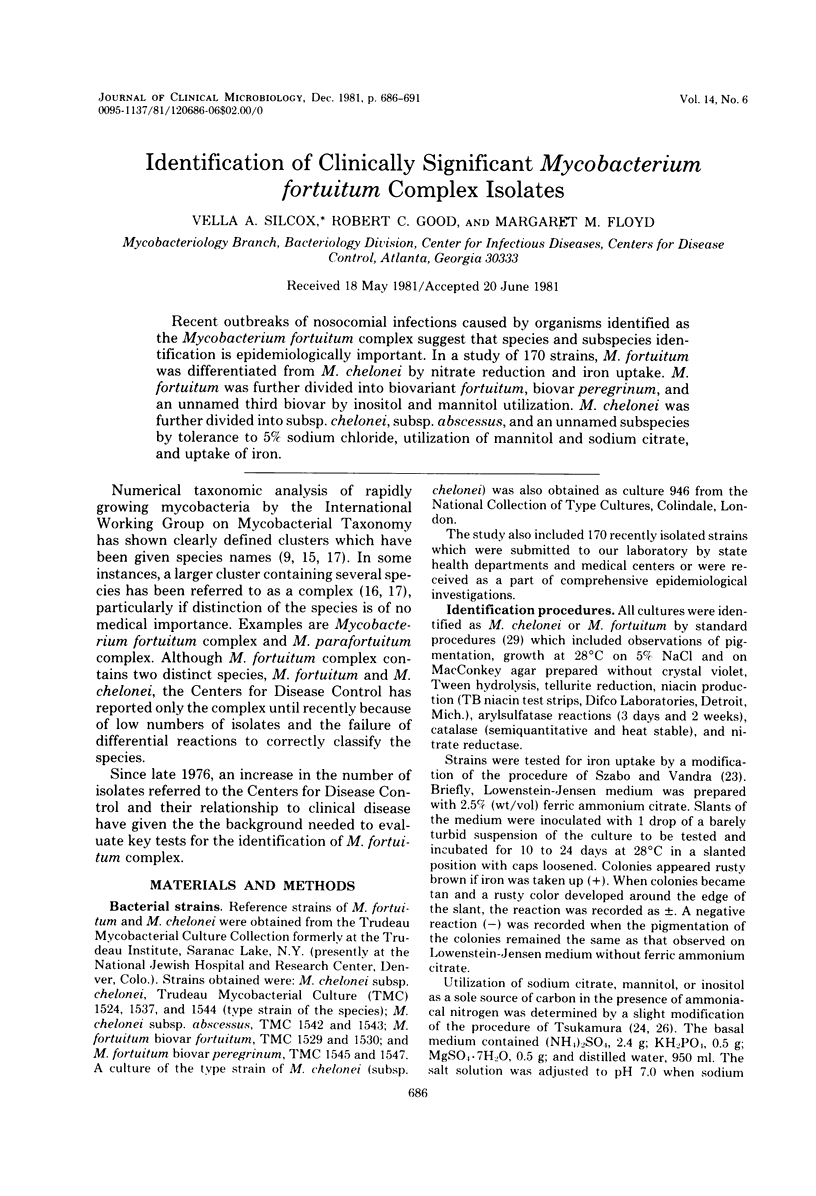
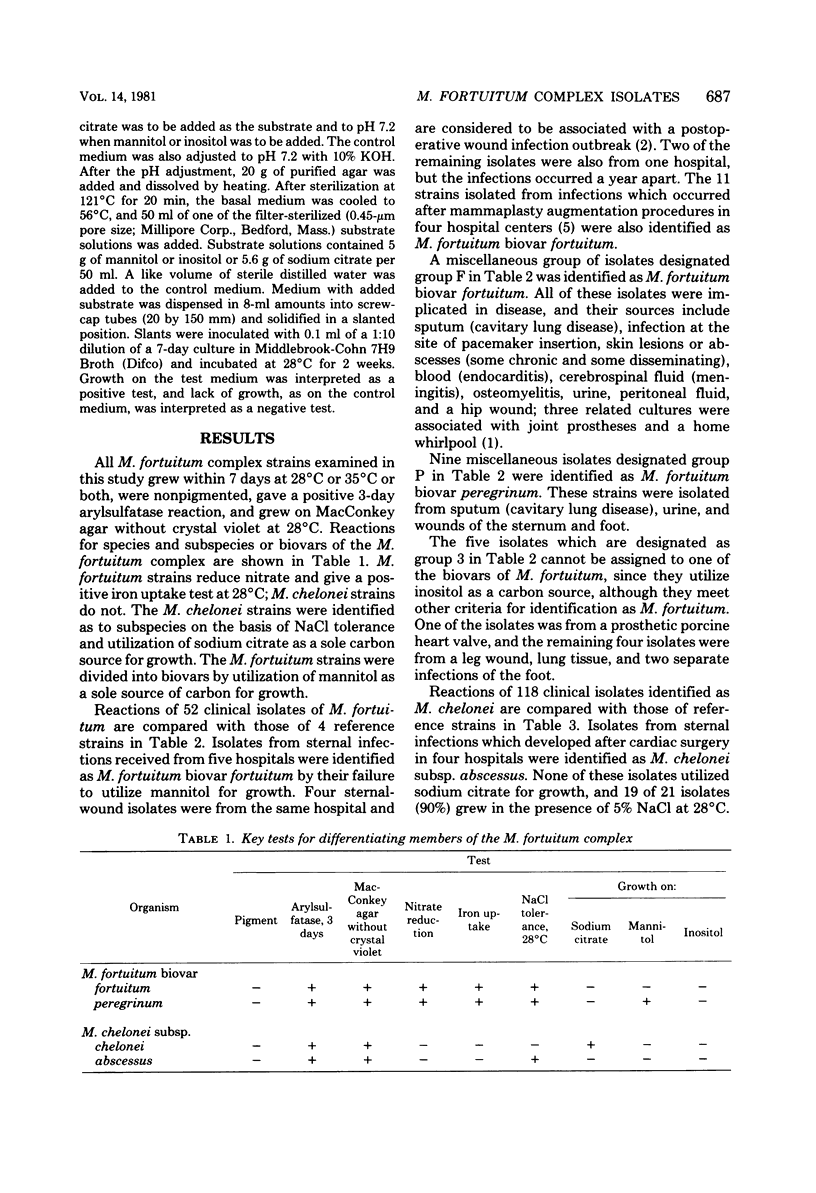
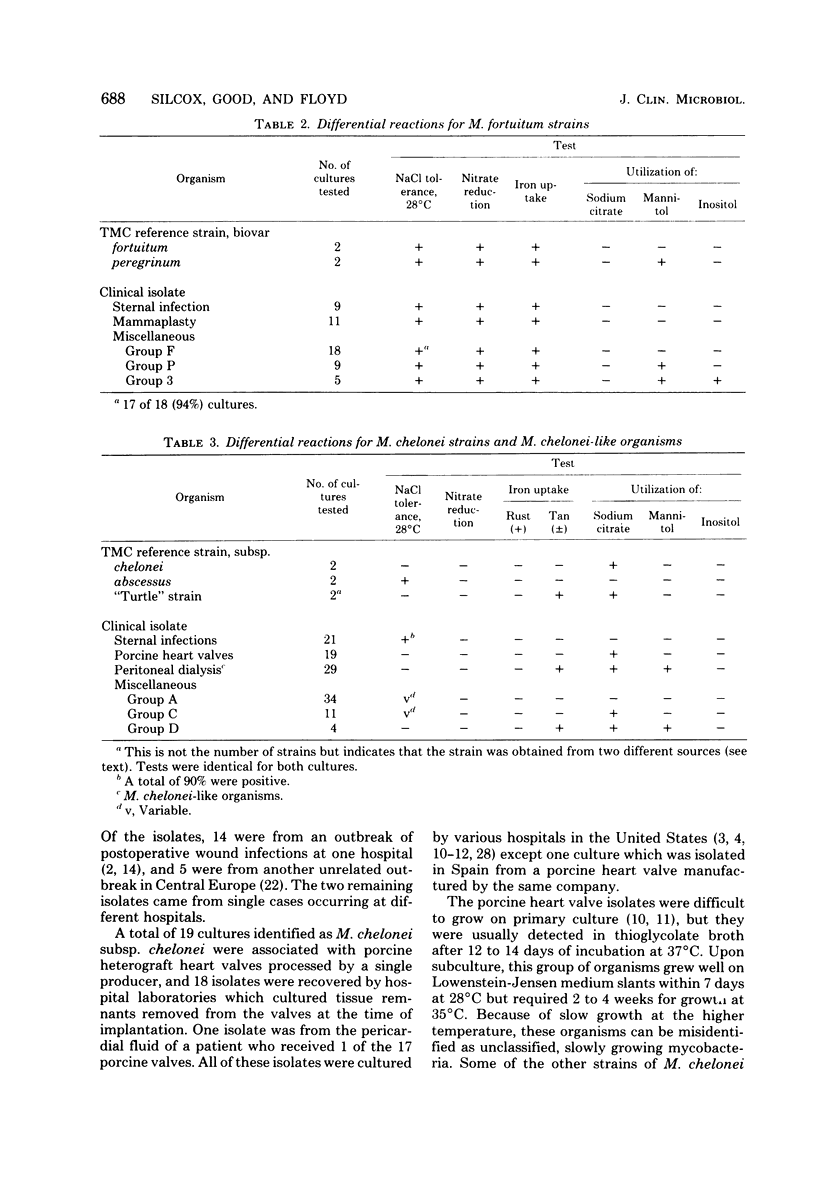
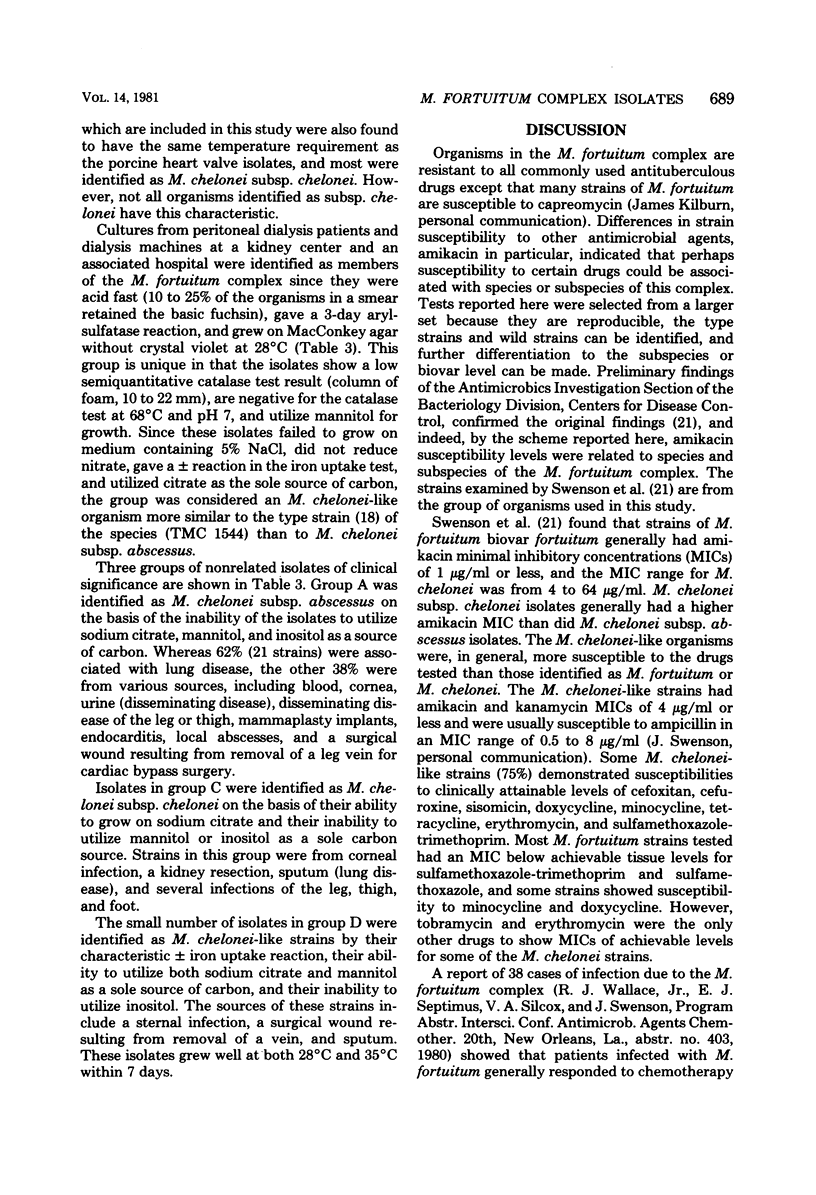
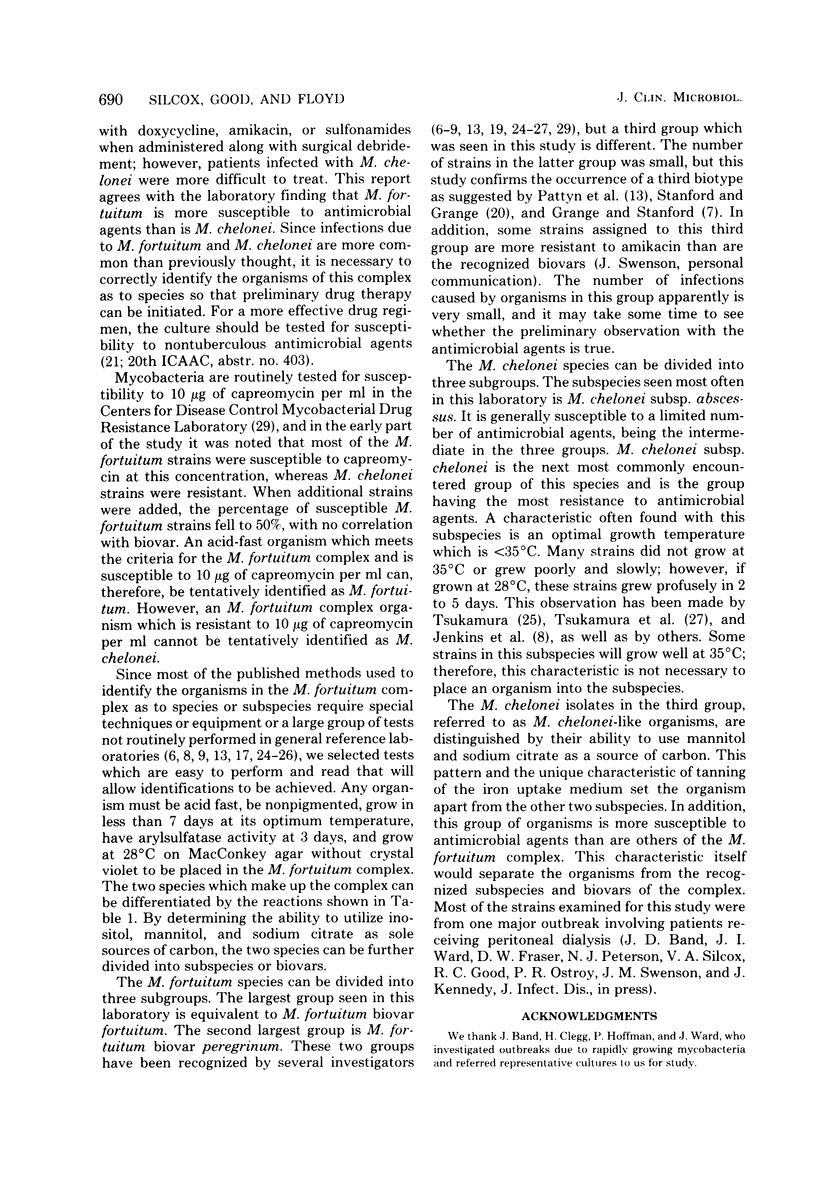
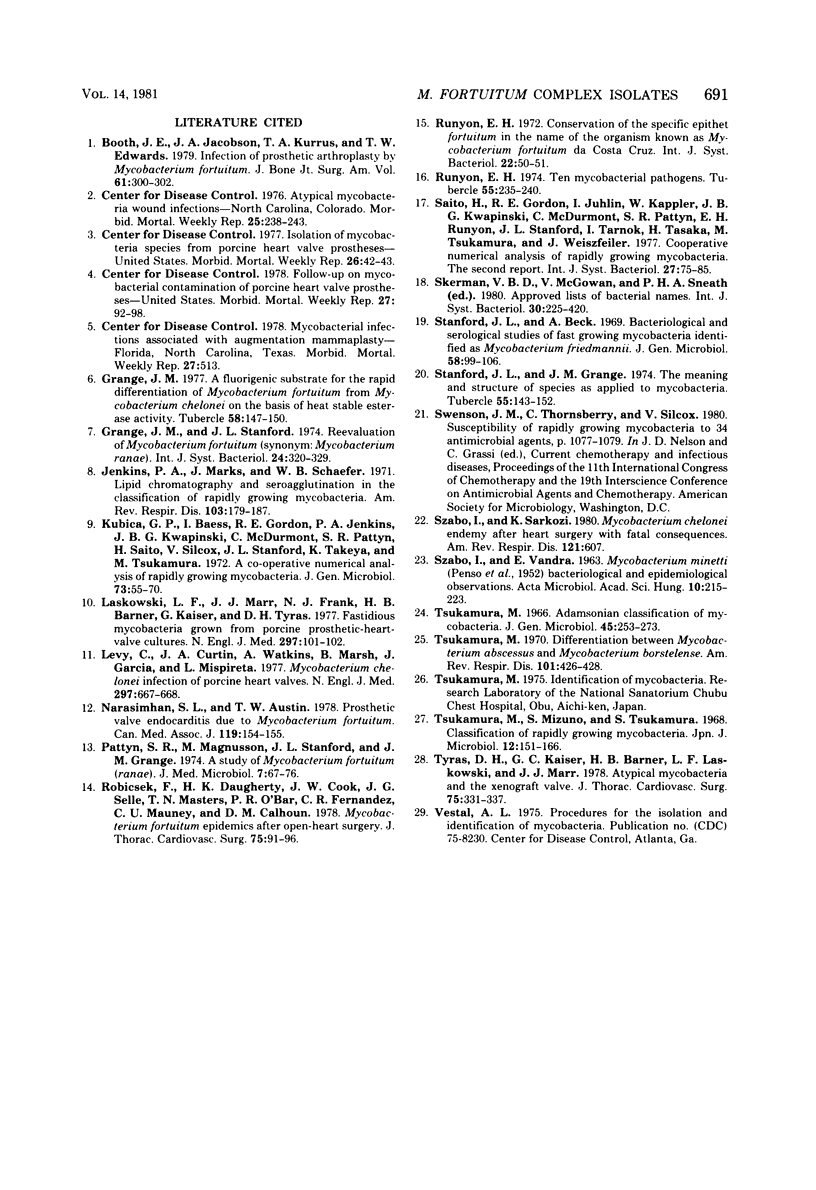
Selected References
These references are in PubMed. This may not be the complete list of references from this article.
- Booth J. E., Jacobson J. A., Kurrus T. A., Edwards T. W. Infection of prosthetic arthroplasty by Mycobacterium fortuitum. Two case reports. J Bone Joint Surg Am. 1979 Mar;61(2):300–302. [PubMed] [Google Scholar]
- Grange J. M. A fluorigenic substrate for the rapid differentiation of Mycobacterium fortuitum from Mycobacterium chelonei on the basis of heat stable esterase activity. Tubercle. 1977 Sep;58(3):147–150. doi: 10.1016/0041-3879(77)90016-2. [DOI] [PubMed] [Google Scholar]
- Jenkins P. A., Marks J., Schaefer W. B. Lipid chromatography and seroagglutination in the classification of rapidly growing mycobacteria. Am Rev Respir Dis. 1971 Feb;103(2):179–187. doi: 10.1164/arrd.1971.103.2.179. [DOI] [PubMed] [Google Scholar]
- Kubica G. P., Baess I., Gordon R. E., Jenkins P. A., Kwapinski J. B., McDurmont C., Pattyn S. R., Saito H., Silcox V., Stanford J. L. A co-operative numerical analysis of rapidly growing mycobacteria. J Gen Microbiol. 1972 Nov;73(1):55–70. doi: 10.1099/00221287-73-1-55. [DOI] [PubMed] [Google Scholar]
- Laskowski L. F., Marr J. J., Spernoga J. F., Frank N. J., Barner H. B., Kaiser G., Tyras D. H. Fastidious mycobacteria grown from porcine prosthetic-heart-valve cultures. N Engl J Med. 1977 Jul 14;297(2):101–102. doi: 10.1056/NEJM197707142970209. [DOI] [PubMed] [Google Scholar]
- Levy C., Curtin J. A., Watkins A., Marsh B., Garcia J., Mispireta L. Mycobacterium chelonei infection of porcine heart valves. N Engl J Med. 1977 Sep 22;297(12):667–668. doi: 10.1056/NEJM197709222971212. [DOI] [PubMed] [Google Scholar]
- Narasimhan S. L., Austin T. W. Prosthetic valve endocarditis due to Mycobacterium fortuitum. Can Med Assoc J. 1978 Jul 22;119(2):154–155. [PMC free article] [PubMed] [Google Scholar]
- Pattyn S. R., Magnusson M., Stanford J. L., Grange J. M. A study of Mycobacterium fortuitum (ranae). J Med Microbiol. 1974 Feb;7(1):67–76. doi: 10.1099/00222615-7-1-67. [DOI] [PubMed] [Google Scholar]
- Robicsek F., Daugherty H. K., Cook J. W., Selle J. G., Masters T. N., O'Bar P. R., Fernandez C. R., Mauney C. U., Calhoun D. M. Mycobacterium fortuitum epidemics after open-heart surgery. J Thorac Cardiovasc Surg. 1978 Jan;75(1):91–96. [PubMed] [Google Scholar]
- Runyon E. H. Ten mycobacterial pathogens. Tubercle. 1974 Sep;55(3):235–240. doi: 10.1016/0041-3879(74)90051-8. [DOI] [PubMed] [Google Scholar]
- SZABO I., VANDRA E. MYCOBACTERIUM MINETTI (PENSO ET AL. 1952). BACTERIOLOGICAL AND EPIDEMIOLOGICAL OBSERVATIONS. Acta Microbiol Acad Sci Hung. 1963;10:215–223. [PubMed] [Google Scholar]
- Stanford J. L., Beck A. Bacteriological and serological studies of fast growing mycobacteria identified as Mycobacterium friedmannii. J Gen Microbiol. 1969 Sep;58(1):99–106. doi: 10.1099/00221287-58-1-99. [DOI] [PubMed] [Google Scholar]
- Stanford J. L., Grange J. M. The meaning and structure of species as applied to mycobacteria. Tubercle. 1974 Jun;55(2):143–152. doi: 10.1016/0041-3879(74)90008-7. [DOI] [PubMed] [Google Scholar]
- Tsukamura M. Adansonian classification of mycobacteria. J Gen Microbiol. 1966 Nov;45(2):253–273. doi: 10.1099/00221287-45-2-253. [DOI] [PubMed] [Google Scholar]
- Tsukamura M. Differentiation between Mycobacterium abscessus and Mycobacterium borstelense. Am Rev Respir Dis. 1970 Mar;101(3):426–428. doi: 10.1164/arrd.1970.101.3.426. [DOI] [PubMed] [Google Scholar]
- Tsukamura M., Mizuno S., Tsukamura S. Classification of rapidly growing mycobacteria. Jpn J Microbiol. 1968 Jun;12(2):151–166. doi: 10.1111/j.1348-0421.1968.tb00379.x. [DOI] [PubMed] [Google Scholar]
- Tyras D. H., Kaiser G. C., Barner H. B., Laskowski L. F., Marr J. J. Atypical mycobacteria and the xenograft valve. J Thorac Cardiovasc Surg. 1978 Mar;75(3):331–337. [PubMed] [Google Scholar]


